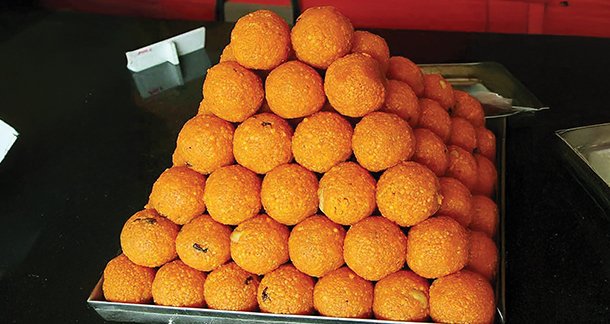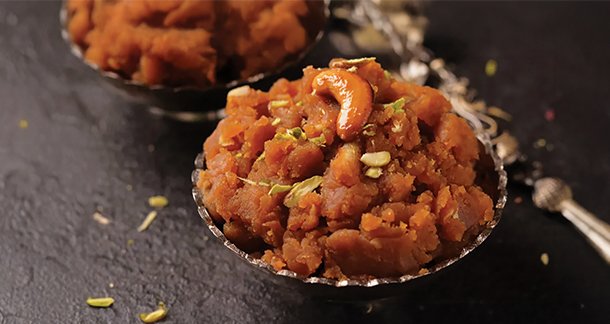India is one of the world’s leading producers of Bengal gram, also known as chickpea, which plays an essential role in cereal-based diets. In the Indian subcontinent, chickpea flour, or “besan“, is a staple in the kitchen and is produced by grinding chickpeas into fine or coarse powder, depending on its culinary use. Gram flour is unique for its high protein and fiber content, lack of gluten, and earthy, nutty flavor. Traditionally, gram flour is central to Indian desserts and sweets, where it is valued for its flavor absorption and versatility in creating varied textures and rich flavors. Historically popular in Rajasthan and Gujarat—where chickpea farming is favored by the dry climate—besan is essential to Indian sweets like besan ki barfi and halwa. These sweets are deeply embedded in Indian culture as symbols of joy and celebration, enjoyed from household kitchens to professional sweet shops. Its distinct taste, aroma, and adaptability make gram flour a cherished, irreplaceable ingredient across generations. This article explores the unique role of gram flour in Indian sweets, highlighting its enduring place in India’s culinary heritage.
Exploring the Rich Tradition of Gram Flour-Based Sweets
Chickpea, the source of gram flour, has been cultivated in India for over 7,000 years. Ancient Indian texts, including Ayurvedic scriptures, praised chickpeas for their health benefits. Gram flour, with its high protein and natural sweetness, quickly became a staple in both savory and sweet dishes. Indian sweets have a rich history tied to the royal courts, where culinary creativity flourished under royal patronage. During the Mughal era (16th to 18th century), gram flour-based sweets became popular as Persian and Central Asian influences merged with Indian cuisine, introducing ghee, sugar, cardamom, and saffron into desserts. Mysore Pak, a famous gram flour sweet, originated in the royal kitchens of Mysore in the late 19th century. Over time, regional variations emerged: Besan Ladoo and Pinni in Punjab and Uttar Pradesh, Magaj and Mohanthaal in Gujarat and Rajasthan, and Besan Barfi in Maharashtra. Gram flour-based sweets hold a special place in Indian culture, especially during religious festivals, where they symbolize love, prosperity, and celebration. These sweets are not only made at home but are also exchanged as gifts, underscoring their importance in fostering community and tradition across generations.

Classic Indian Sweets Made with Gram Flour: A Culinary Delight
This versatile ingredient lends itself to a wide variety of textures, flavours, and forms. Here’s a look at some of the most popular gram flour-based sweets, showcasing the rich culinary heritage associated with this humble flour:
- Besan ke Ladoo: Besan keladoo is perhaps the most iconic of all gram flour sweets. These golden, round balls are made with roasted gram flour, ghee (clarified butter), and sugar, often garnished with cardamom, nuts, and raisins. They are characterized as rich and melt-in-the-mouth with a nutty and caramelized flavour.
- Mysore Pak: A classic sweet originating from Karnataka in South India, Mysore Pak is made with a simple blend of gram flour, sugar, and a generous amount of ghee. It has a rich, fudge-like texture that can range from crumbly to melt-in-the-mouth, depending on the ghee content. The roasted gram flour gives it a distinct earthy flavour.
- Besan ki Barfi: Besan ki barfiis similar to ladoos but in a square or diamond shape. It is often flavoured with cardamom and saffron. Dense and slightly firm, with a rich, sweet taste.
- Boondi orMotichoor Ladoo: Boondi ke ladoo is made from tiny fried gram flour droplets called “boondi.” The boondi is soaked in sugar syrup and then shaped into balls. These ladoos have a delightful grainy texture and a juicy sweetness due to the sugar syrup. They are often flavoured with cardamom, saffron, and sometimes rose water.
- Boondi: Boondiitself can be enjoyed as a sweet without shaping it into ladoos. Sweet boondi is made by frying small droplets of gram flour batter, which are then soaked in sugar syrup. Sometimes, coloured boondi is added for visual appeal. It is characterised as slightly crunchy with a sugar-glazed coating that melts in your mouth. It is generally served as a simple dessert, especially during temple offerings.
- Son Papdi: Also spelled as Soan Papdi, is a unique and flaky dessert that stands apart from other gram flour-based sweets. It is known for its light, airy texture and sweet, melt-in-the-mouth experience. This sweet is usually square or cube-shaped, and its delicate strands make it a favourite among those who enjoy a lighter sweet option.
- Magaj(Gram Flour Fudge): Popular in Gujarat, Magaj is a fudge-like sweet made from roasted gram flour, ghee, sugar, and nuts. It is similar to gram flour barfi but has a denser and softer texture.
- Besan kaHalwa: Besan ka halwa is a rich, warming dessert made by slow-cooking gram flour with ghee, water or milk, sugar, and flavoured with cardamom.

Health Benefits: Why Gram Flour is a Nutritious Choice for Desserts
Gram flour is a nutrient-dense, high-fiber food that offers numerous health benefits. Its soluble fiber helps balance cholesterol, reduce hypertension, and protect against heart disease. Additionally, fiber slows sugar absorption, making gram flour suitable for individuals with diabetes or blood sugar challenges. Unlike refined carbohydrates, the complex starch in gram flour digests slowly, providing sustained energy and aiding weight management by promoting a feeling of fullness. Its high protein and fiber content can curb cravings, supporting healthy weight loss. Gram flour is also known for its anti-inflammatory properties, with studies suggesting protective benefits against cancers, particularly of the digestive tract, like colon and stomach cancer.
Modern Twists on Traditional Gram Flour Treats
Gram flour, or besan, has been a staple in Indian kitchens for centuries, prized for its earthy flavor, versatility, and protein-rich content. Today, chefs and home cooks are reimagining traditional gram flour sweets by incorporating new ingredients, textures, and techniques. This evolution caters to a generation that values both tradition and modern tastes, with a growing awareness of nutrition. Many classic sweets have been transformed to reduce sugar and fat while preserving their authentic flavors. For example, traditional besan ladoos, once made with ghee and sugar, are now sweetened with alternatives like jaggery, honey, or coconut sugar. Ghee is sometimes replaced with coconut oil to make the treats vegan and healthier. Fitness enthusiasts have also modified besan barfi by adding whey protein powder, nuts, seeds, and almond butter, creating a protein-rich snack ideal for post-workout nutrition.
Fusion cuisine is a popular trend, blending traditional Indian sweets with Western elements. One modern adaptation involves dipping roasted besan ladoos in dark or white chocolate, combining the rich, nutty flavor of besan with the bitter-sweetness of chocolate. Bakers have experimented with combining gram flour with cream cheese and mascarpone to create fusion cheesecakes. These desserts maintain the essence of besan while embracing the creamy texture of a Western cheesecake. Saffron and cardamom are often added to enhance the Indian character. Inspired by Western crumbles, traditional besan halwa is baked with a crispy topping of nuts, oats, and jaggery, offering a unique textural contrast. The trend of using matcha has led to matcha-infused besan ladoos, where the vibrant green hue and subtle bitterness balance the sweetness, creating a visually striking treat. Traditional son papdi has also been given a tropical makeover with flavors like mango and coconut. These innovations cater to evolving tastes, dietary preferences, and health trends while honoring the essence of Indian sweets. Whether through vegan adaptations, fusion desserts, or new flavor profiles, gram flour-based sweets continue to evolve, providing exciting ways for people to celebrate this beloved ingredient.

Hence, gram flour (besan) stands as a cornerstone of Indian sweets, celebrated for its versatility, rich flavor, and ability to adapt to a wide range of textures and tastes. From the melt-in-the-mouth softness of Mysore Pak to the flaky perfection of Son Papdi, gram flour-based desserts hold a special place in India’s culinary traditions. Whether in traditional forms or with modern twists, gram flour continues to bring both comfort and creativity to kitchens across the country. Its unique ability to blend seamlessly with ghee, sugar, and spices ensures that it remains not only a staple in festive celebrations but also a favorite for everyday indulgence. As it evolves to meet contemporary dietary needs and preferences, gram flour proves that it is more than just a basic ingredient—it’s a timeless element in the art of Indian sweet-making.
About the authors:
Dr Preethi Ramachandran, Dr Sweta Rai and Dr Sabbu Sangeeta
Department of Food Science and Technology, College of Agriculture, GBPUAT, Pantnagar, Uttarakhand



